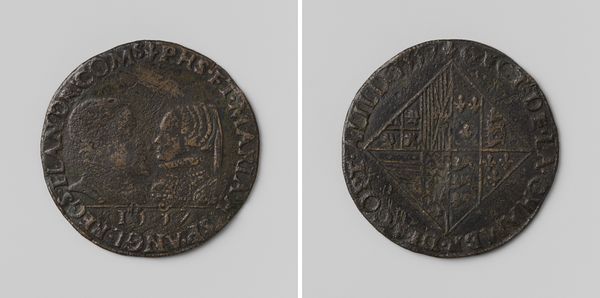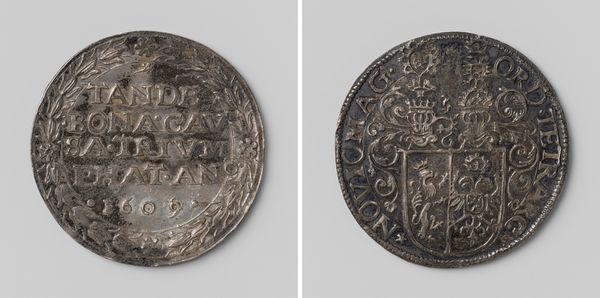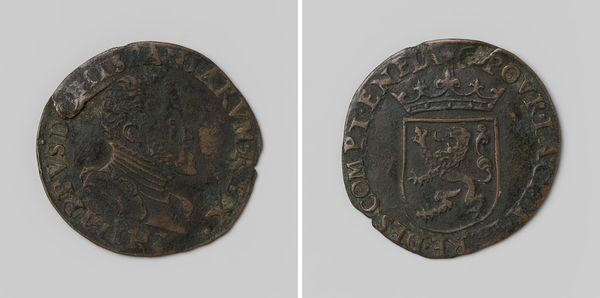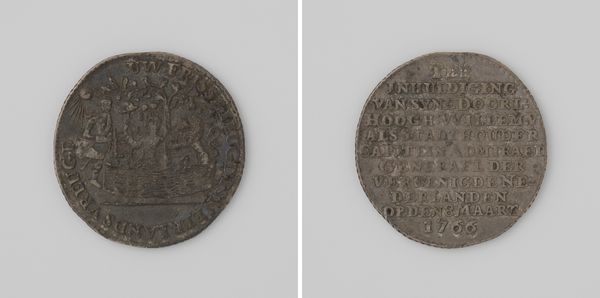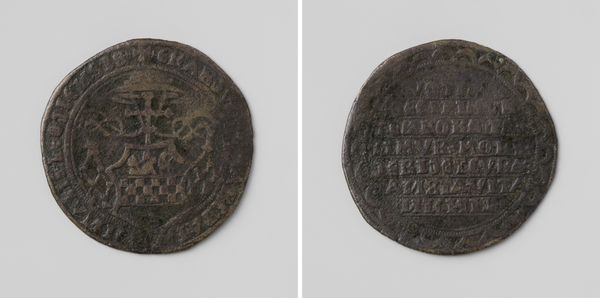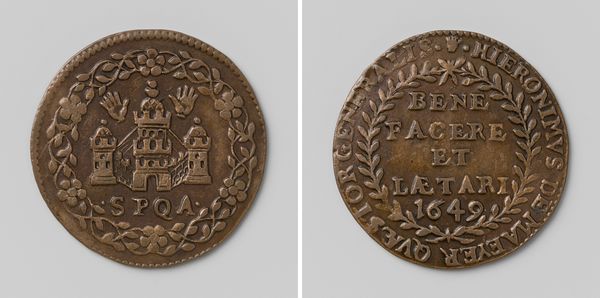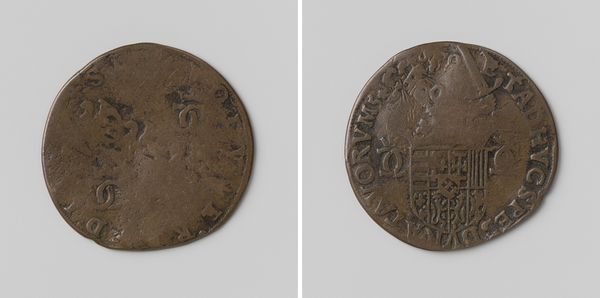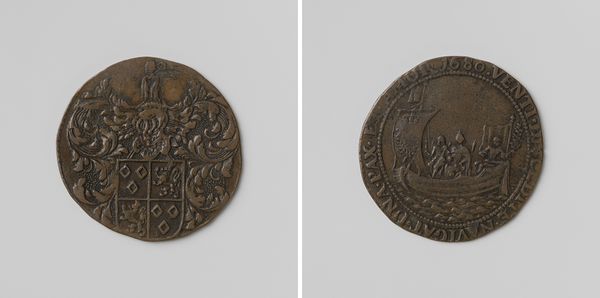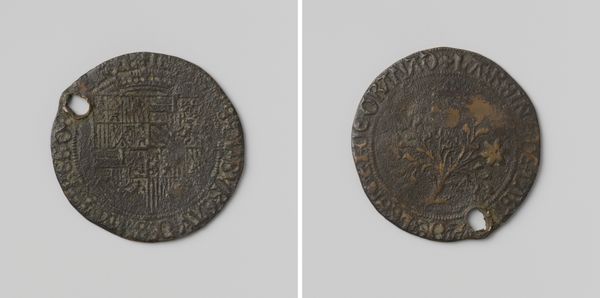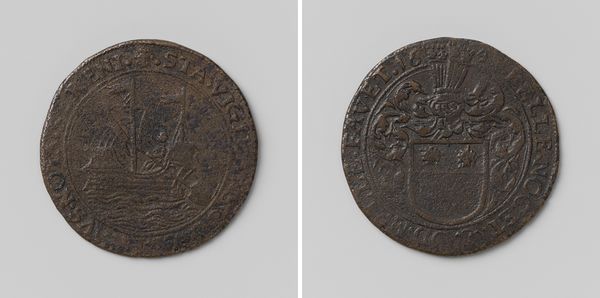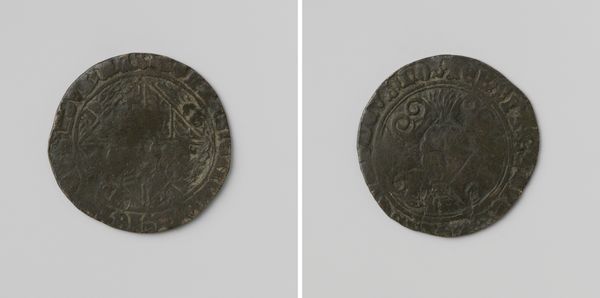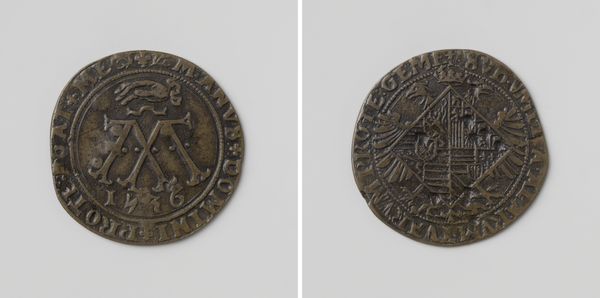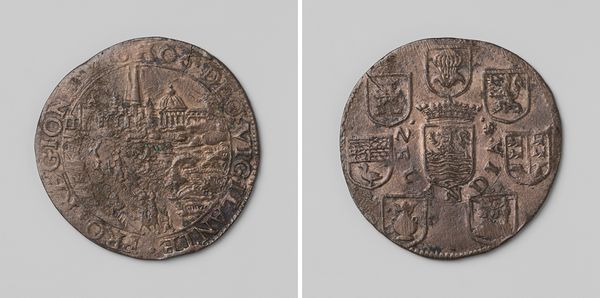
carving, print, metal, relief, engraving
#
portrait
#
carving
#
dutch-golden-age
# print
#
metal
#
sculpture
#
relief
#
sculpting
#
carved
#
history-painting
#
engraving
#
miniature
Dimensions: diameter 3.1 cm, weight 5.58 gr
Copyright: Rijks Museum: Open Domain
Editor: Here we have an engraving dating back to 1609. The title is quite a mouthful: *Sluiting van het Twaalfjarig Bestand tussen de Republiek en Spanje.* It commemorates the truce between the Dutch Republic and Spain. Given its miniature format, I am wondering how the artist intended to circulate it? What do you see as the primary purpose of creating and distributing this kind of token? Curator: Well, such tokens played a significant role in shaping public perception and commemorating crucial historical moments. Think of them as miniature billboards designed to be carried and displayed, continually reminding people of specific narratives and political positions. Given that this marks a significant, albeit temporary, pause in a long and costly conflict, this commemorative object likely served to consolidate national identity. How might its physical existence contributed to collective memory? Editor: I see, it's not just about the event itself, but about cementing its meaning for the people. The imagery would almost be propaganda then, aimed at reinforcing a particular understanding of the truce? Curator: Exactly. And by distributing these tokens, the ruling class had a direct line of communication with its public. It created a shared visual language around statecraft. Notice the laure wreath framing the text. Consider how even subtle aesthetic choices underscore a triumphant and positive interpretation of the truce. Who were its intended audiences, and how would such tokens shape their interpretation of the political situation at the time? Editor: I hadn’t considered it that way. So it’s about controlling the narrative and using art to do so, beyond just aesthetics. It makes me wonder how differently people perceived this event based on whether or not they were exposed to such visual messaging. Curator: Precisely! And that's the power of examining art within its socio-political context. The public role of art helps you look closely and ask some more complex questions. Editor: Definitely! I'm leaving this audio guide with a broadened idea on the political intention behind it!
Comments
No comments
Be the first to comment and join the conversation on the ultimate creative platform.
